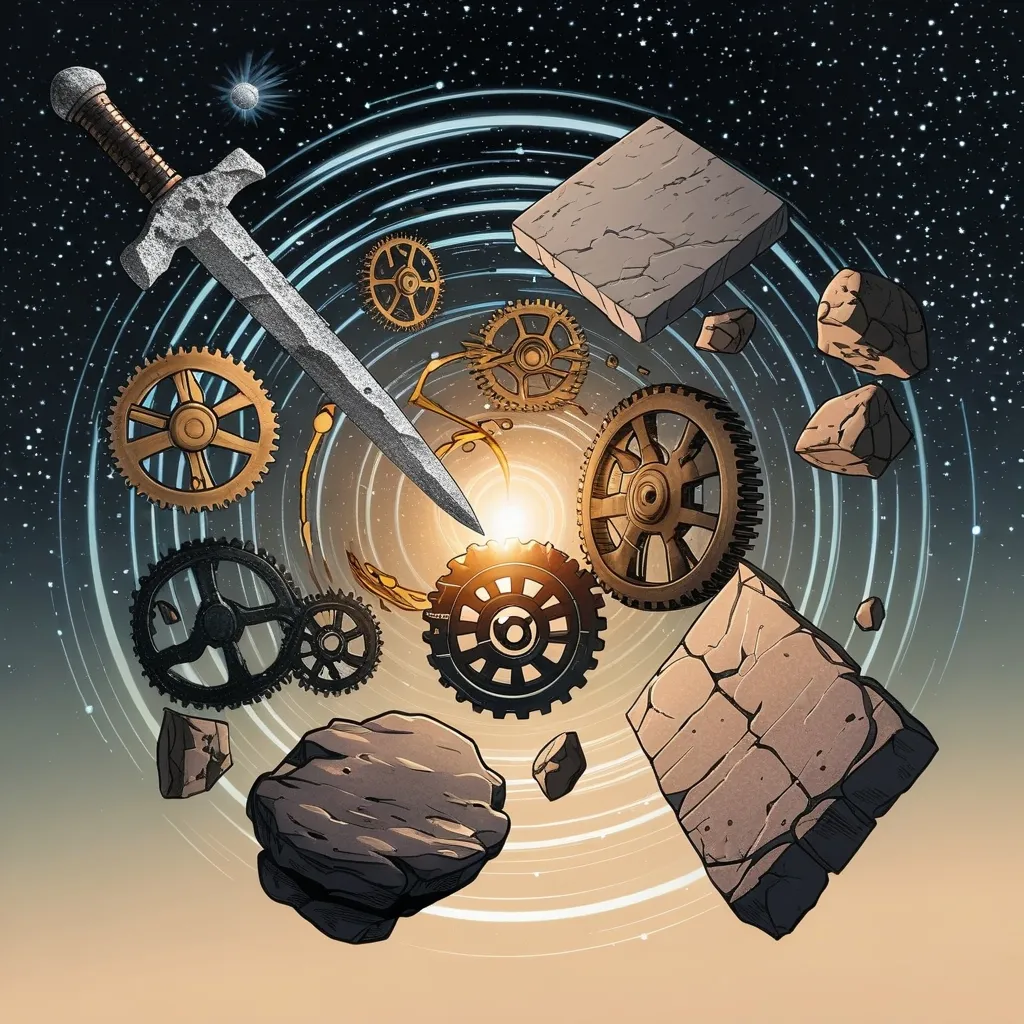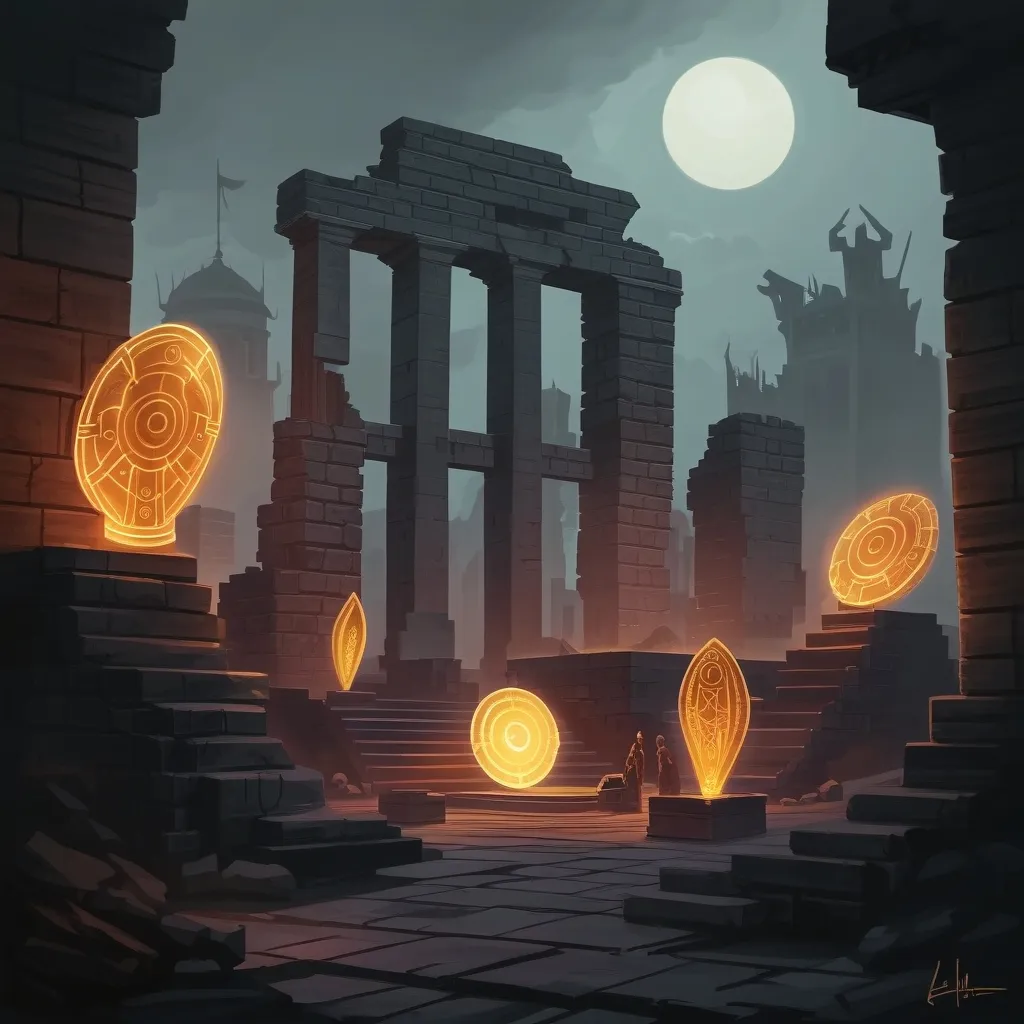Ancient Mysteries: Unraveling the Secrets of Out-of-Place Artifacts
History is full of surprises, and nothing quite captures our imagination like ancient artifacts that seem to defy explanation. These enigmatic objects, known as “out-of-place artifacts” or OOPArts, challenge our understanding of human history and technological development. Let’s dive into some of the most intriguing examples and explore the mysteries they present.
King Tut’s Space Dagger
Imagine being an ancient Egyptian pharaoh and having a dagger made from a freaking meteorite. That’s exactly what King Tutankhamun had in his tomb. This cosmic blade predates the Iron Age by thousands of years, which is pretty mind-blowing when you think about it. The ancient Egyptians called meteorites “iron from the sky,” which sounds like something straight out of a sci-fi novel. It’s wild to think about how they managed to work with such otherworldly materials.
The Ancient Greek Computer
Ever heard of the Antikythera mechanism? It’s basically an ancient Greek computer that could calculate astronomical positions and predict eclipses. Found in a shipwreck, this intricate device dates back to around 100 BCE. It’s like finding an iPhone in your great-great-grandma’s attic. The complexity of this gadget has modern engineers scratching their heads, wondering how the ancient Greeks pulled it off.
Batteries Before Edison
Speaking of ancient tech, let’s talk about the Baghdad batteries. These clay jars with iron rods and asphalt stoppers could generate electricity. Found in Iraq, they’re about 2,000 years old. Were ancient Mesopotamians charging their smartphones? Probably not, but it’s fun to imagine. Some think they might have been used for electroplating or zapping away pain. Either way, it’s pretty shocking (pun intended) to think about ancient civilizations harnessing electricity.
The Map That Shouldn’t Exist
The Piri Reis map is like the ancient world’s Google Maps, but way cooler. Drawn in 1513, this Turkish map shows coastlines with incredible accuracy, including Antarctica without its ice cap. The kicker? Antarctica wasn’t officially discovered until centuries later. It’s like the mapmaker had a time machine or some seriously advanced satellite technology. This map has sparked all sorts of theories, from lost civilizations to alien cartographers.
Incan Lego Masters
Ever tried to build something with Lego and couldn’t get the pieces to fit just right? Well, the ancient Incas put us all to shame with the Sacsayhuaman fortress. These massive limestone blocks fit together so perfectly you can’t even slip a knife between them. Some of these bad boys weigh over 300 tons. Modern builders have tried and failed to replicate this precision. It’s like the Incas had some secret stone-fitting superpower we’ve lost over time.
The Book No One Can Read
Imagine finding a book written in a language no one on Earth can understand. That’s the Voynich manuscript for you. This mysterious tome is filled with weird plants, star charts, and drawings that look like they’re from another planet. Cryptographers have been pulling their hair out trying to crack this code for years. Some think it’s an alien guidebook, others say it’s just an elaborate medieval prank. Either way, it’s one heck of a conversation starter.
The Hammer That Time Forgot
Picture this: you’re out for a stroll in Texas, and you stumble upon a hammer stuck in a rock that’s supposedly 400 million years old. That’s exactly what happened with the London Hammer. It looks like a regular old 19th-century hammer, but its rocky time capsule tells a different story. Some folks think it’s proof of time travel or super-advanced ancient civilizations. Others say it’s just a quirky geological mishap. Whatever the truth, it’s definitely hammered home some wild theories.
Ancient Alien Vinyl Records?
The Dropa stones are like the vinyl records of the ancient world, except no one knows how to play them. These stone discs from China are covered in tiny hieroglyphics arranged in a spiral. Some people think they’re 12,000-year-old alien artifacts left behind by extraterrestrial visitors. Whether they’re proof of ancient aliens or just some really old frisbees, these stones have definitely spun up a lot of speculation.
The First Flying Egyptians?
Ever seen those little wooden airplane models in toy stores? Well, the ancient Egyptians might have beat us to it with the Saqqara bird. This tiny wooden statue looks suspiciously like a modern airplane, complete with wings and a tail. Some enthusiasts swear it’s proof that the Egyptians were secretly aviation pioneers. Others say it’s just a bird figurine. Either way, it’s got people’s imaginations soaring.
Easter Island’s Secret Code
Easter Island isn’t just famous for its big-headed statues. It’s also home to the Rongorongo tablets, covered in a script that no one can decipher. It’s like the island’s ancient inhabitants left behind a puzzle for future generations to solve. Scholars have been scratching their heads over this one for centuries. Maybe it’s a shopping list, maybe it’s the secret to eternal life. Until someone cracks the code, we’ll just have to keep guessing.
A Roman Head in Mexico?
Imagine digging in Mexico and finding a sculpture that looks like it belongs in ancient Rome. That’s exactly what happened with the Tecaxic-Calixtlahuaca head. This Roman-style noggin showed up in a pre-Columbian site, throwing historians for a loop. Did the Romans make it to the Americas before Columbus? Was it brought over later? Or is it just a really convincing fake? This head is definitely giving archaeologists a headache.
The Great Wall of… Texas?
You’ve heard of the Great Wall of China, but what about the Great Wall of Texas? Off the coast of the Bahamas, there’s a submerged wall made of huge stone blocks. Some folks think it’s an ancient barrier built to protect a prehistoric settlement from waves. Others say it’s just a natural formation playing tricks on us. Either way, it’s got people diving deep into theories about lost civilizations.
South African Space Marbles
In South Africa, tiny spheres called the Klerksdorp spheres have been found in ancient rock formations. These little balls look so perfect that some people think they must be alien artifacts or remnants of an advanced ancient civilization. Geologists, being the party poopers they are, say they’re just natural formations. But you’ve got to admit, the idea of ancient aliens playing marbles is pretty entertaining.
Japan’s Underwater Mystery
Off the coast of Japan, there’s an underwater rock formation called the Yonaguni Monument that looks suspiciously man-made. With its straight edges and right angles, it’s easy to see why some folks think it’s the remains of a lost civilization. But before you start planning your underwater archaeological expedition, know that most experts think it’s just a natural formation. Still, it’s fun to imagine an ancient Atlantis-like city lurking beneath the waves.
Bosnian Pyramid Scheme?
In Bosnia, there’s a hill that some people swear is actually a hidden pyramid. The Bosnian pyramid complex has sparked heated debates between those who see ancient wonders and those who see, well, just hills. While mainstream archaeologists have debunked the pyramid claims, it hasn’t stopped enthusiasts from digging into the mystery. It just goes to show that one person’s hill is another person’s ancient wonder.
Faces in Unexpected Places
Remember that time we all thought we saw a face on Mars? The “Face on Mars” had UFO enthusiasts buzzing with excitement until higher-resolution images revealed it to be a trick of light and shadow. It’s a classic case of seeing what we want to see. Similarly, the “Ararat Anomaly” on Mount Ararat in Turkey had people convinced they’d found Noah’s Ark, until closer inspection proved otherwise. These cases remind us that sometimes our imaginations can run a little wild when it comes to ancient mysteries.
The Tucson Artifacts Teach Us a Lesson
Last but not least, let’s talk about the Tucson Artifacts. These lead objects were once thought to be evidence of early Mediterranean civilizations in America. Turns out, they were just a well-crafted hoax. It’s a reminder that not all ancient mysteries are what they seem, and it’s important to approach these enigmas with a healthy dose of skepticism.
Wrapping It Up
These out-of-place artifacts are like little puzzles from the past, challenging what we think we know about history and human capabilities. While some might have logical explanations, others continue to baffle experts and spark our imaginations. They remind us that history is complex, often mysterious, and full of surprises.
As we explore these enigmas, it’s important to keep an open mind while also relying on solid scientific evidence. Who knows? Maybe someday we’ll crack the code of the Voynich manuscript or figure out how the ancient Egyptians worked with meteorites. Until then, these mysteries serve as a testament to human ingenuity and the enduring allure of the unknown.
So next time you’re digging in your backyard, keep an eye out. You never know when you might stumble upon the next great archaeological mystery. Just make sure it’s not your neighbor’s long-lost garden gnome before you call the history channel!






